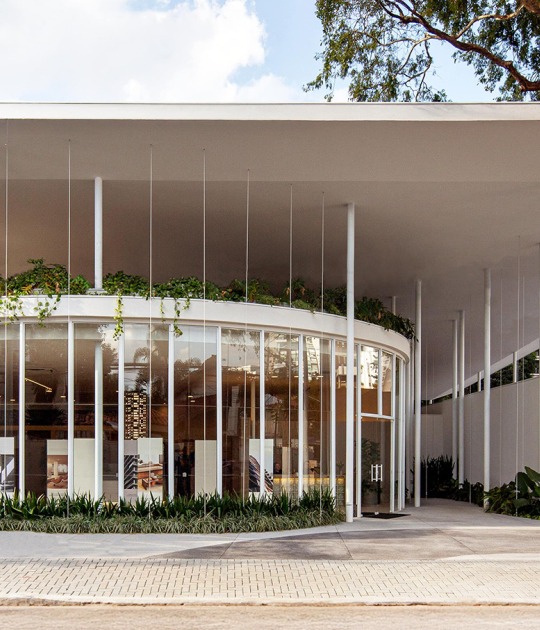This year's 24th edition (an open call), the winning proposals were selected by jury members: Ricaro Azócar, Rozana Montiel, Javier Peña, Anna Puigjaner and Elena Tudela Rivadeneyra.
View the winning pavilion designs and honourable mentions below.
First Place Winners.- Walled Garden - Garden Wall
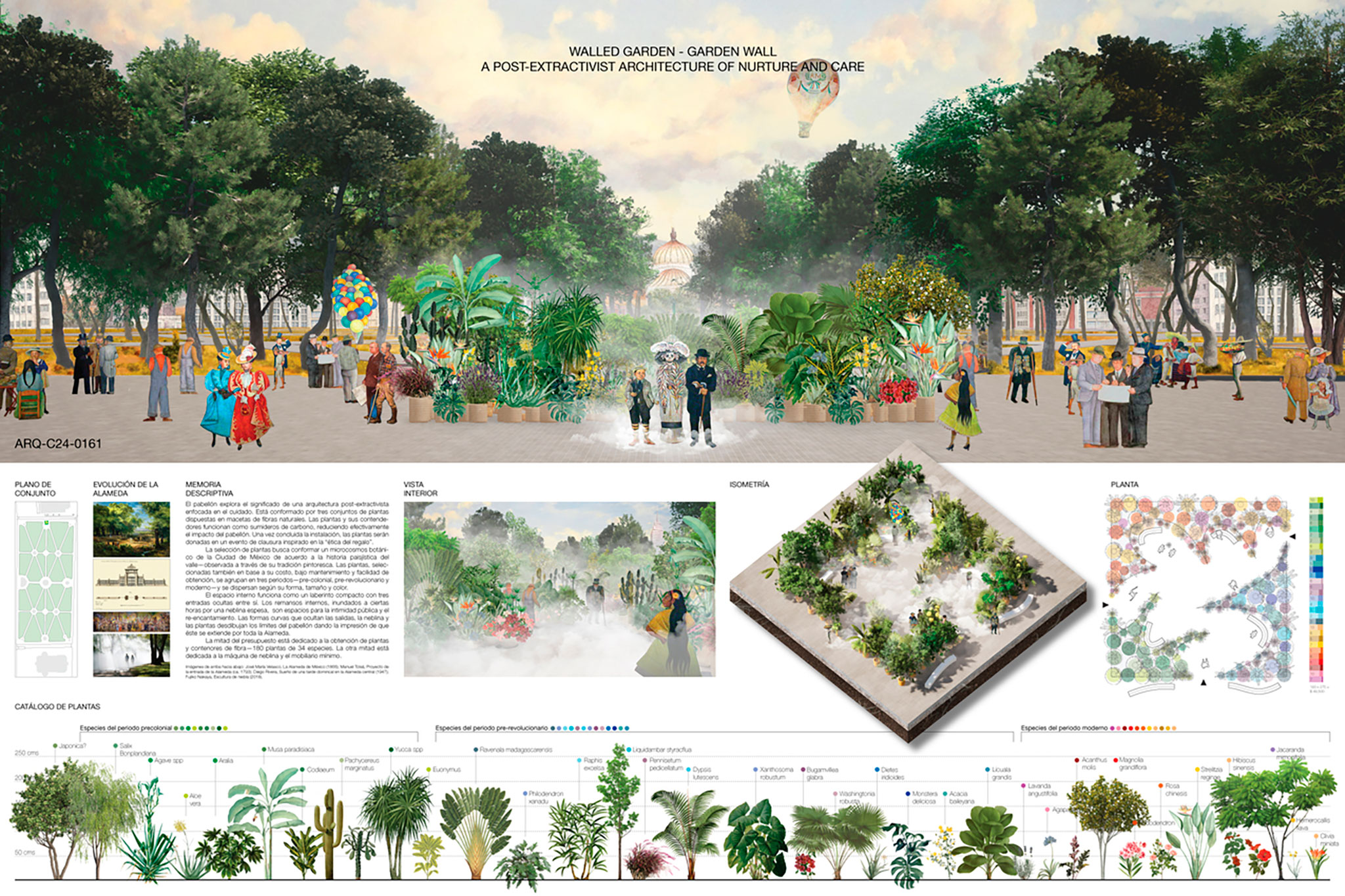
1st Place Winners - Project by: Carlos Moreno, Carlos Galido and Daniel Daou. Jalapa and Mexico City, Mexico
Jury Comments.-
View the winning pavilion designs and honourable mentions below.
First Place Winners.- Walled Garden - Garden Wall

1st Place Winners - Project by: Carlos Moreno, Carlos Galido and Daniel Daou. Jalapa and Mexico City, Mexico
Jury Comments.-
The jury unanimously agreed that this proposal brings together several elements that synthesize this year's call, with a contemporary narrative. The pavilion disappears when the citizens take the plants at the end of the Festival, and this affects a large group of people. With something as simple as a plant, the place is transformed. The historical baggage that the pavilion takes through the plants, which speaks of three historical moments in Mexico, is represented in three groups of plants. The rigor of the vegetation as a material demonstrates awareness when considering species that can be found in Mexico City. A pavilion that proposes a garden within a garden, with interior spaces that can be very interesting. In this project, something fundamental is to maintain the leafiness of the proposal. The mist can be generated with water vapor from the same irrigation system. The mist would not be continuous but would become evidence of plant care. This itself generates a certain temporality within the same pavilion and becomes a playful space.
Second Place.- El Rontón
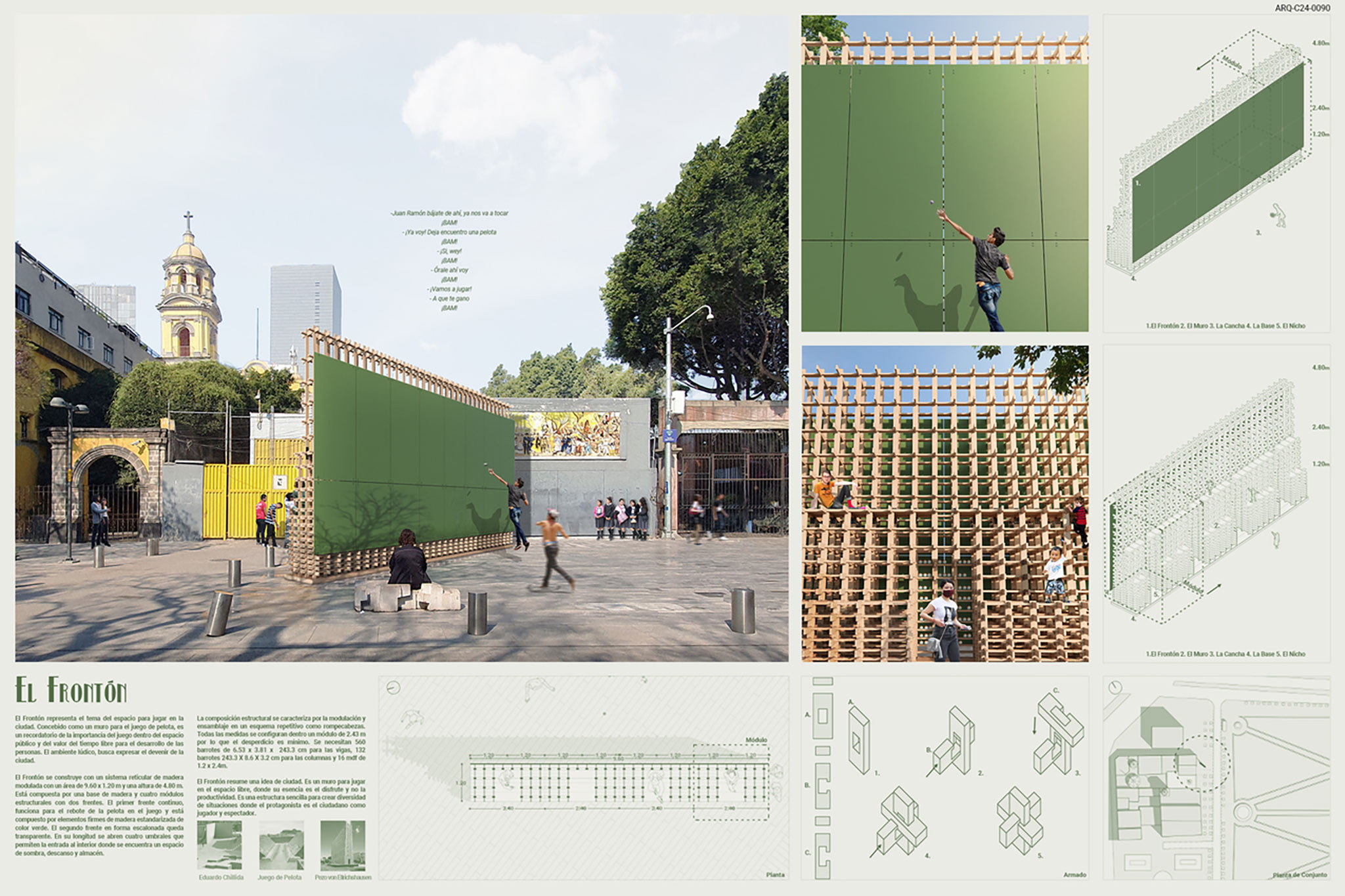
2nd Place Winners - Project by: Alberto Guillermo Bou González and Ana Cecilia Valdés Iñigo. Mexico City, Mexico
Jury Comments.-
A very interesting proposal since the pediment implies a real activation by the citizens with a very social message. As it is planned, it has spatiality and offers multiple functions: you can play, the back part becomes a storage room, a climbing wall and it is also a space to rest. Within the imagination of the jury, the green surface could be used for projection, like an open-air cinema. The jury understood that it is a piece that, at the end of the festival, could be taken to a community as a community space.
Third Place Winners.- La Casa de Berta
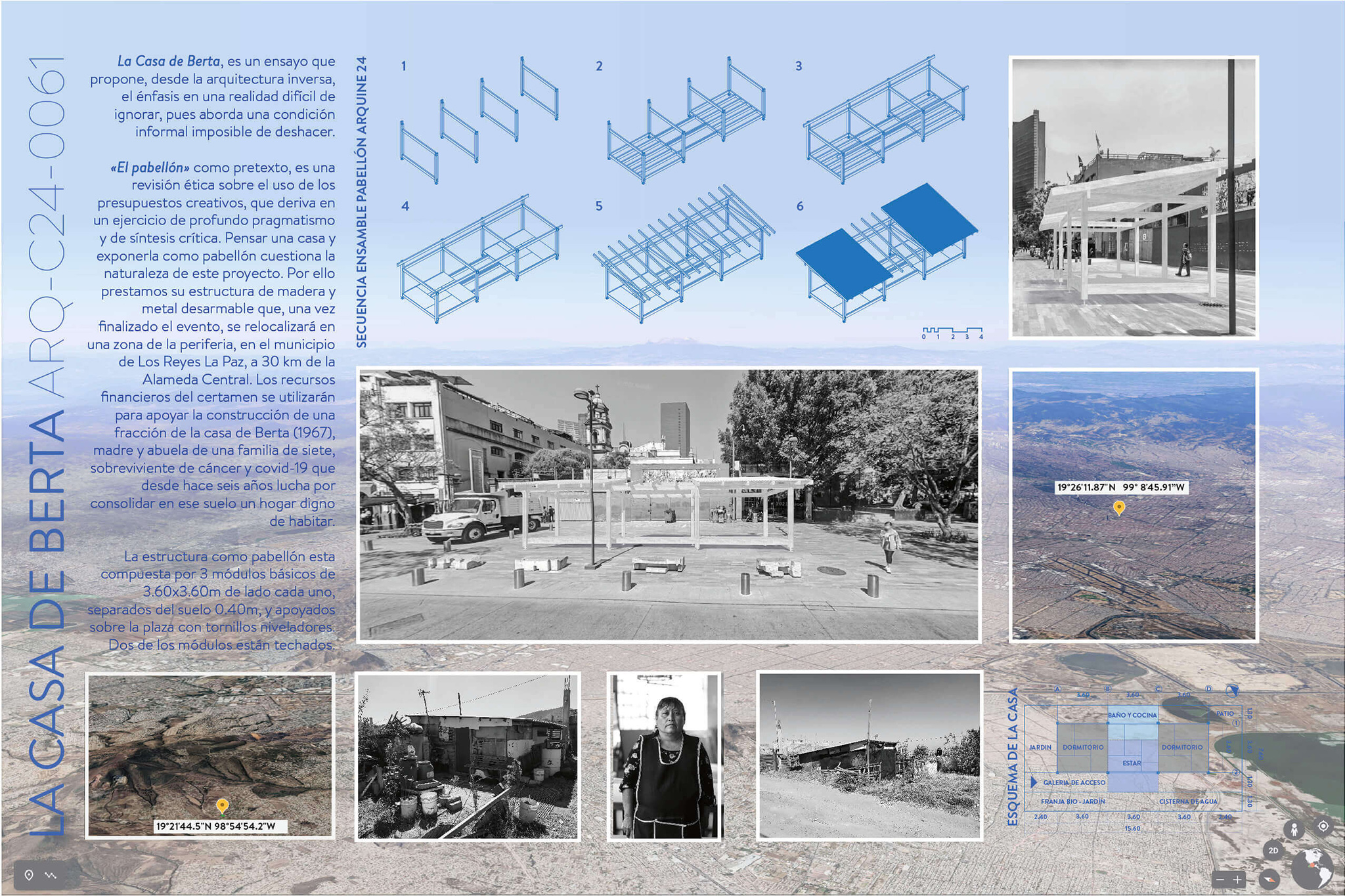
3rd Place Winners - Ad Urbis Architects (Kiovet Sánchez Álvarez, Samuel Puente Fernández, Celia García Acosta), Havana, Cuba. La Metropolitana (Rodrigo Escobedo Baena, Omar Fabricio Vázquez Valle, Salvador Mondragón Galindo, Narda Aldana Miranda) Mexico City, Mexico.
Jury Comments.-
It proposes the use of the money for the construction of a house for a vulnerable person and the jury emphasizes that the subject of vulnerability be addressed. The result of the pavilion is the shadow of the house. On the other hand, it is a somewhat controversial proposal to offer the house to a specific family and not to another, or why a single-family house and not something that benefits a community. The jury commented that the formal resolution of the pavilion lacked an explanation of the background of the proposal, by not proposing information for citizens to understand the context of this project and the beneficiary. However, they stand out for bringing to the call other non-formal possibilities for the contest and for the second life that would be given to the piece by turning it into a family home.
Honorable Mention.- Hacia otra perspective ecológica
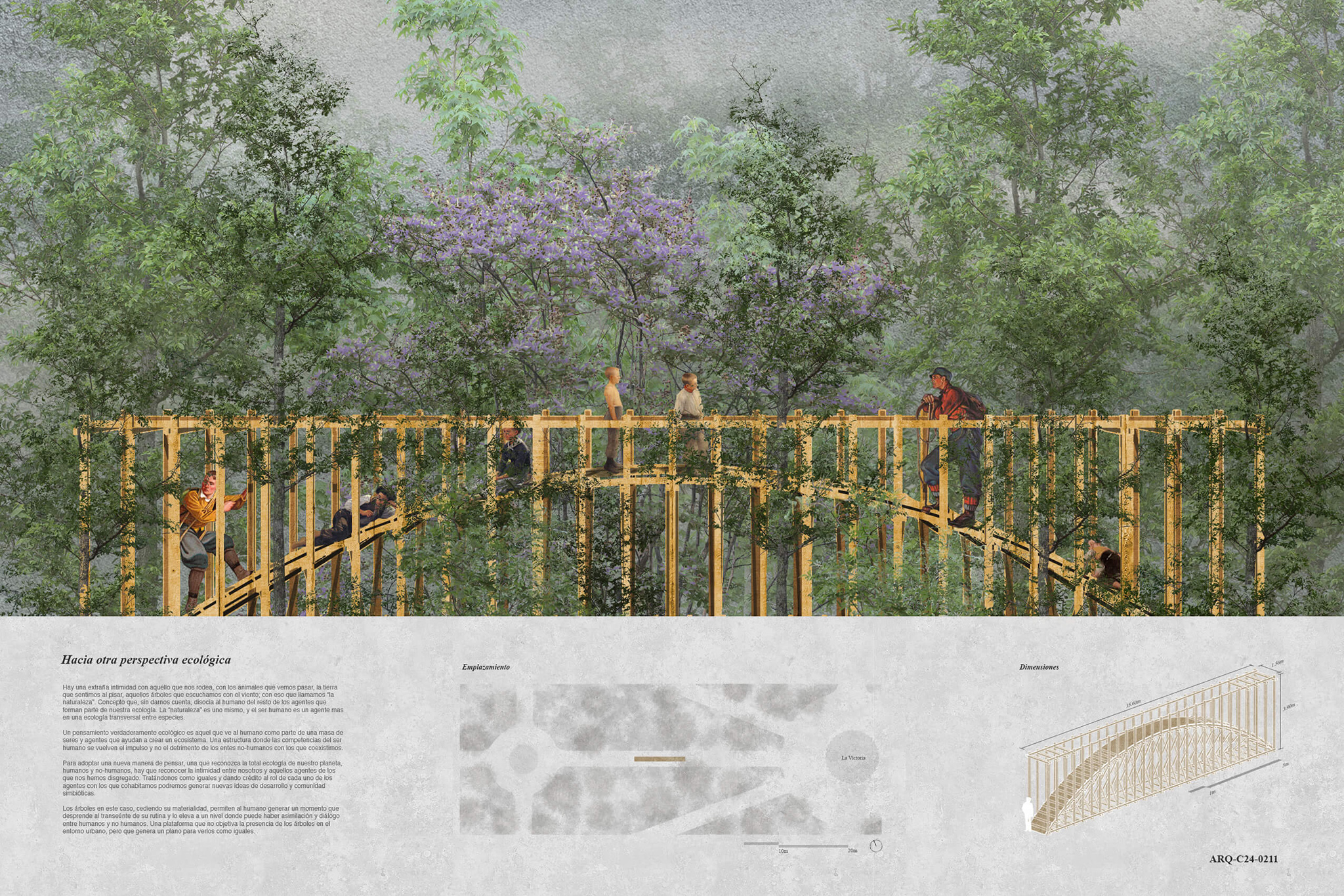
Honorable Mention Winners - Jacobo Mendoza Zendejas. Guanajuato, Mexico.
Jury Comments.-
The jury highlights this proposal by offering the possibility of doing an activity that normally cannot be done: rising as an action. Inhabit the park with the treetops around the citizens. Without invading spaces that cannot be intervened, it remains in the central walkway, proposing a change of perspective and the point of view of the Alameda Central, promoting circulation. It also stands out for its constructive simplicity and its viability.










![OB Space [NEMO] by Conjuntos Empáticos OB Space [NEMO] by Conjuntos Empáticos](/sites/default/files/styles/mopis_home_news_category_slider_desktop/public/2025-08/metalocus_conjuntos-empaticos_maca_ob-space-neno_16_p.jpg?h=3b4e7bc7&itok=tsZ36bI0)
